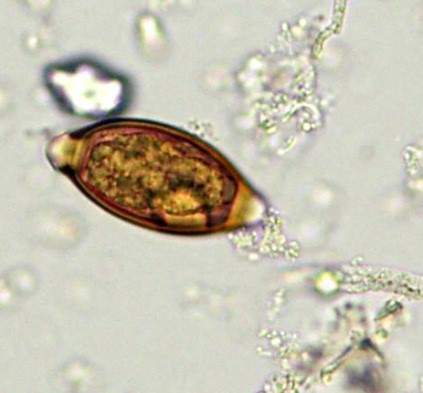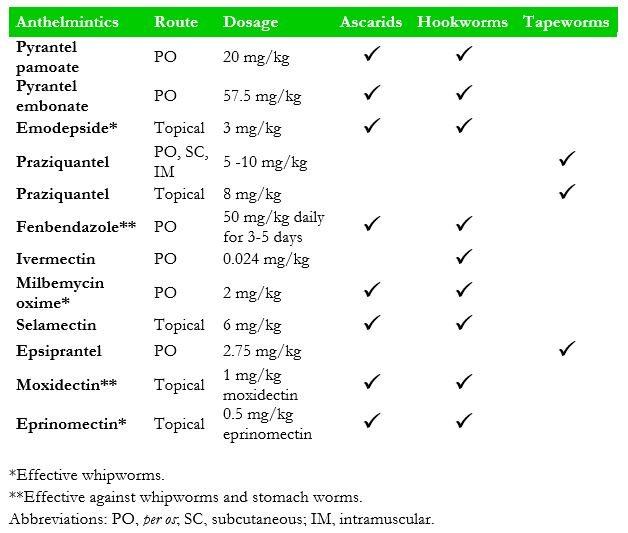Whipworms
(Trichuris spp.)
Whipworms are nematodes of the caecum and colon of wild felids that can sporadically infect domestic cats.
Distribution
Worldwide
Clinical signs
Whipworm infections are well tolerated by domestic cats, which typically remain asymptomatic.
Diagnosis
Whipworm infections in cats can be confirmed by standard faecal flotation (SOP 1) using a flotation solution with SG ≥ 1.20. Eggs (approximately 54-85 x 34-40 µm) have a thick, yellow-brown, symmetrical shell, with polar plugs at both ends [1] (Fig. 1). Eggs of Trichuris spp. should be differentiated from those of other parasites, including Eucoleus aerophilus and Pearsonema feliscati (which is found in the urine). Adults have a characteristic ‘whip’ shape with a long, thin anterior end (embedded in mucosa) and stout posterior end (Fig. 2).

Figure 1. Trichuris spp. egg on faecal flotation (Image credit: Dr. T. Inpankaew)

Figure 2. Trichuris spp. adult worms (Image credit: The University of Melbourne parasitology image library)
Treatment
Refer to Table 1 for anthelmintics known to be efficacious for the treatment of Trichuris spp. in dogs and that are likely to be efficacious for the treatment of Trichuris spp. in cats when administered at labelled doses.
Table 1 Routes of administration, dosage and efficacies of commonly utilised anthelmintics against the primary gastrointestinal parasites of cats [1,2].
Prevention and Control
The control of feline whipworms can be achieved through proper diagnoses, therapy and sanitation of the cattery. Overcrowding of cats should be avoided. Faeces should be removed daily from the litterbox.
For further control options refer to the General Considerations and Recommendations section of these guidelines.
Public health considerations
None
Reference
[1] Bowman DD, Hendrix CM, Lindsay DS, Barr SC. Feline Clinical Parasitology. Iowa State University Press, Ames, USA. 2002.

